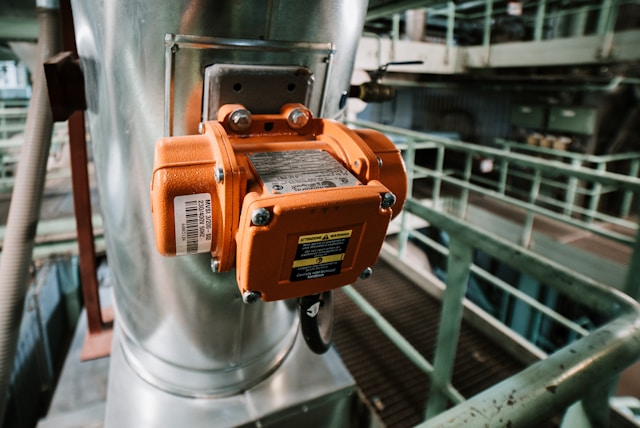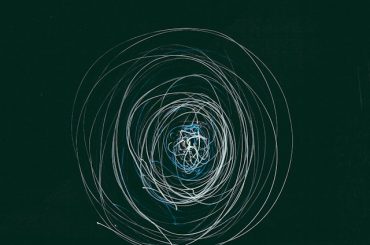Industrial pump failures cascade through operations like dominoes, creating costs that extend far beyond equipment replacement. Downtime expenses, emergency service calls, and production losses typically exceed the original pump investment by 300-500%.
A Grundfos centrifugal pump represents significant capital investment, yet proper maintenance protocols can deliver 15-20 years of reliable service. Equipment longevity depends entirely on systematic care—pumps receiving comprehensive maintenance routines consistently outperform neglected units by decades. Strategic maintenance planning transforms potentially catastrophic failures into predictable, manageable operational costs.
Grundfos Pump’s Anatomy
Modern Grundfos pumps integrate sophisticated engineering across multiple interconnected systems. The motor assembly converts electrical energy into mechanical rotation, while precision-machined impellers generate hydraulic pressure through centrifugal force. Mechanical seals create critical barriers between rotating and stationary components, preventing fluid loss and contamination ingress. High-performance bearings support rotating assemblies under continuous load while managing thermal expansion and mechanical stress.
Component interdependency means individual failures often trigger cascading damage throughout pump systems. Submersible configurations face unique challenges from constant fluid exposure, requiring enhanced seal materials and corrosion-resistant components. Surface-mounted installations must manage thermal cycling, vibration isolation, and environmental protection while maintaining accessibility for routine maintenance.
Optimal pump operation produces consistent pressure output, minimal vibration signatures, and stable thermal characteristics. Deviation from baseline performance parameters—unusual acoustic signatures, temperature elevation, or pressure fluctuations—indicates developing component degradation requiring immediate investigation. Early detection protocols enable cost-effective interventions before minor wear patterns escalate into major component failures.
Installation and Initial Setup
Installation quality determines long-term reliability more than any other factor. Foundation preparation requires precision leveling, adequate mass for vibration dampening, and proper curing time to achieve specified compressive strength. Mechanical alignment between pump and piping systems must meet manufacturer tolerances to prevent stress concentration and premature component wear.
Critical Installation Checklist:
- Foundation engineered for dynamic loads with proper isolation characteristics
- Piping alignment verified within 0.002 inches per foot of pipe run
- Electrical connections meet NEC standards with proper grounding and phase verification
- System commissioning includes full operational testing across design parameters
- Performance baselines established for pressure, flow, power consumption, and vibration
Operating parameters must remain within design envelopes throughout service life. Exceeding specified flow rates induces cavitation damage to impellers and volute casings. Pressure limits protect mechanical seals and bearing assemblies from excessive loading. Temperature boundaries prevent thermal degradation of sealing materials and lubrication systems.
Common installation deficiencies include inadequate foundation preparation, misaligned piping creating stress points, and electrical connections failing to meet voltage and harmonic distortion requirements. Professional installation verification ensures optimal starting conditions and validates warranty coverage for long-term equipment protection.
Daily Vigilance
Systematic monitoring detects developing problems while repair costs remain manageable. Visual inspections identify obvious deterioration including seal leakage, corrosion progression, and mechanical damage. Performance monitoring reveals subtle changes indicating internal wear patterns or system inefficiencies developing over time.
Daily Inspection Protocol:
- Examine seals, flanges, and connections for fluid leakage or weepage
- Monitor acoustic signatures for bearing wear, cavitation, or mechanical interference
- Record operating pressure, flow rate, and power consumption data
- Check motor and bearing housing temperatures against baseline readings
- Document observations in maintenance logs for trend analysis
Pressure monitoring provides early warning indicators for multiple failure modes. Gradual pressure decline often indicates impeller erosion or system fouling requiring cleaning or component replacement. Sudden pressure changes may signal catastrophic internal damage necessitating immediate shutdown and inspection.
Temperature trending identifies bearing deterioration, motor overload conditions, and cooling system problems before critical failures occur. Thermal imaging technology enables precise monitoring of hotspots indicating developing problems invisible to conventional inspection methods.
Comprehensive documentation creates invaluable historical data for optimizing maintenance intervals and predicting component replacement needs. Performance trending enables scheduled maintenance during planned outages rather than emergency response situations.
Environmental Optimization
Environmental conditions significantly influence pump longevity and performance reliability. Ambient temperature control prevents motor overheating and bearing lubricant degradation. Adequate ventilation ensures proper heat dissipation while preventing moisture condensation on electrical components.
Critical Environmental Factors:
- Temperature Management: Maintain ambient conditions within manufacturer specifications to prevent thermal stress
- Ventilation Systems: Ensure adequate airflow around motor cooling fins and electrical enclosures
- Fluid Quality: Monitor chemical composition, particle content, and thermal properties
- Electrical Infrastructure: Install power conditioning equipment to eliminate voltage disturbances
- Physical Protection: Provide weather shielding and chemical compatibility barriers
Fluid quality directly impacts internal component life expectancy. Hard water minerals create scale deposits restricting flow passages and accelerating wear on dynamic sealing surfaces. Corrosive elements attack metallic components, reducing structural integrity and creating contamination sources. Abrasive particles function as cutting compounds, eroding impeller surfaces and bearing races.
Regular fluid analysis identifies problematic conditions before equipment damage occurs. pH monitoring detects corrosive tendencies while particle counting reveals filtration system effectiveness. Chemical compatibility verification ensures pump materials maintain integrity when exposed to process fluids.
Electrical power quality affects motor winding life and control system reliability. Voltage imbalances create uneven magnetic fields producing excessive heat and vibration. Harmonic distortion increases losses while voltage spikes damage insulation systems. Power conditioning equipment provides cost-effective protection against electrical disturbances.
Proactive Maintenance
Preventive maintenance programs dramatically extend equipment service life while reducing unexpected failures. Systematic cleaning removes debris accumulation that restricts cooling airflow or damages sealing surfaces. Lubrication schedules ensure bearings receive proper protection against friction and corrosion.
Mechanical seal replacement should follow predetermined schedules rather than failure-based replacement. These critical components protect expensive internal parts from contamination while preventing fluid loss. Proactive replacement eliminates emergency repairs while maintaining system reliability.
Professional maintenance services provide specialized diagnostic equipment unavailable to most facilities. Vibration analysis identifies developing bearing problems months before audible symptoms appear. Laser alignment verification ensures optimal coupling performance while preventing premature wear. Motor circuit analysis detects insulation degradation before winding failures occur.
Fluid quality maintenance ensures pumps operate with clean, properly conditioned media. Contaminated fluids accelerate component wear through abrasive action and chemical attack. Filtration system maintenance removes particulate contamination while chemical treatment prevents corrosion and scaling.
Maintenance scheduling must reflect actual operating conditions rather than generic recommendations. Severe service applications require shortened intervals while lighter duties may safely extend service periods. Environmental conditions, fluid characteristics, and duty cycles all influence optimal maintenance timing.
Catching Problems Early
Early problem detection prevents minor issues from escalating into major equipment failures. Systematic diagnostic procedures identify root causes rather than treating symptoms. Performance monitoring systems provide objective data about pump condition and operational efficiency trends.
Acoustic monitoring reveals developing mechanical problems through characteristic sound patterns. Bearing deterioration typically progresses from subtle frequency changes to obvious grinding noises. Cavitation produces distinctive crackling sounds indicating suction-side problems requiring immediate attention.
Performance degradation usually develops gradually through impeller wear or system fouling. Flow rate reductions may indicate mechanical wear while pressure changes suggest internal damage or system modifications affecting pump operation. Power consumption increases often precede mechanical failures.
Vibration analysis provides precise diagnostic information about rotating equipment condition. Amplitude increases at specific frequencies correlate with particular failure modes including bearing wear, impeller imbalance, and misalignment problems. Trending vibration data enables predictive maintenance scheduling.
Documentation strategies for recurring issues help identify root causes and develop permanent solutions. Pattern recognition reveals whether problems stem from operating conditions, maintenance practices, or design limitations requiring system modifications. Systematic troubleshooting prevents repeated failures while optimizing long-term reliability.
Your Path to Maximum Pump ROI
Maximizing Grundfos pump lifespan requires systematic implementation of proven maintenance strategies. Proper installation establishes the foundation for reliable operation while consistent monitoring preserves equipment condition throughout service life. Environmental optimization and predictive maintenance complete the comprehensive approach necessary for maximum return on investment.
Integration of these maintenance elements creates synergistic effects exceeding individual component benefits. Professional installation prevents premature wear while systematic monitoring enables early problem detection. Environmental control and proactive maintenance sustain optimal operating conditions throughout equipment life cycles.
The economic benefits extend beyond equipment longevity to include reduced energy consumption, improved process reliability, and elimination of emergency repair costs. Systematic maintenance transforms pump ownership from reactive crisis management into predictable asset management with measurable financial returns.








